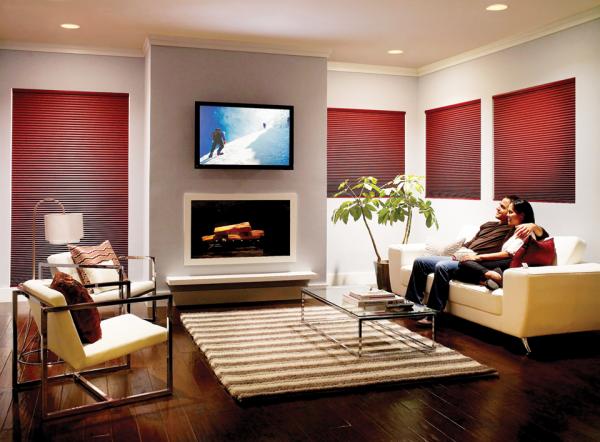DIY Theater Check

For those of us without six figures of disposable funds, there are still some ways to improve a home theater/media room that don’t involve organ donation or a potential divorce. Here are some simple, won’t-break-the-bank enhancements that you can do on your own.
Confirm Connections
This should be obvious, but I’ve seen so many badly connected systems that I’m going to start with it anyhow: Make sure your stuff is hooked up and configured correctly! Spend 30 minutes and go through your connections and system settings. Run a receiver’s built-in test tones to ensure that all of your speakers are working, wired correctly, and set for the appropriate crossover points and levels. If you have surround back or front height speakers, is your receiver set up and switched to the proper mode to use them? Use a test Blu-ray to tweak your TV’s picture settings, but barring that, at least set your TV to the “Movie” or “Cinema” mode — anything other than “Dynamic” or “Vivid.”
Make it Dark...
An easy way to improve video quality is to make your room darker. Think of a movie theater: The side walls are covered in dark material, and a black wall surrounds the screen. These treatments draw your eye to the image and improve contrast. You can achieve this at home by painting the wall behind your screen as dark as your significant other/decorator will allow. Choose pretty much any color other than white, though you should stick with neutral tones that won’t bias your perception of the image (red, green, and blue are the worst offenders) and be sure to use flat, not gloss, paint.
Windows are a darkness killer, but fortunately there are tons of window-treatment options. Want really cheap and really effective (though not pretty)? Cut a piece of cardboard that totally covers the window and seals out all the light. A step-up option is blackout blinds or shades. More expensive but infinitely cooler are automated blinds like Lutron’s new Sivoia QS wireless cellular shades. These are battery-powered and remote-controlled, and can be operated by virtually any smart remote for a super-cool touch.
...Or Dim
While you want things dark during movies, there will be times when you need some light in the room. Replacing light switches with dimmers is easy, but replacing them with infrared controllable dimmers is cool. For under $100 you can get a dimmer like Lutron’s Maestro that will let you adjust your lighting by remote. Once it’s installed, you can then program a smart remote with a simple “Play Movie” macro that starts the film and drops the lights, and an “Intermission” one that pauses the movie and raises the lights to 50%. Accent lighting adds another theatrical touch. Sconces not only look cool but also direct light upward and away from the screen, making them perfect for times when you don’t want to watch in total darkness.
Room for Improvement
Your room has a huge impact on your audio system’s performance, and there are some simple room-related changes you can make to help things sound better. If your audio system is in a room with hardwood or tile flooring, consider adding a large area rug to soak up reflected sound. Besides helping with lighting control, heavy drapes are also great at absorbing sound reflections.
“Rattlers” are what I call random, loose objects that buzz and shake when watching movies or listening to music. To eliminate these, buy an audio test disc with a slow sine sweep that covers frequencies from 20 to 100 Hz. Play the track, listen for what makes noise, locate it, and fix it. Felt pads are great for taming an annoying rattler.
- Log in or register to post comments
























































